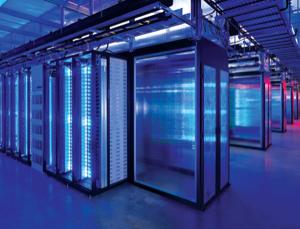Google, Facebook - Clean Up The Cloud - Apple, Microsoft, Amazon Must Try Harder!
 WILL our Gmails, Facebook posts and online data back-ups cost the Earth? Cloud services depend on energy-hungry data centres to store information remotely. Now Greenpeace has produced an environmental report card for these data centres that gives a thumbs-up to Google and Facebook, but wags a finger at Apple, Amazon and Microsoft.
WILL our Gmails, Facebook posts and online data back-ups cost the Earth? Cloud services depend on energy-hungry data centres to store information remotely. Now Greenpeace has produced an environmental report card for these data centres that gives a thumbs-up to Google and Facebook, but wags a finger at Apple, Amazon and Microsoft.Operating at full capacity, the world’s data centres would use 31 gigawatts of power, about the same as all residential households in the UK combined, according to Datacenter Dynamics of London, which tracks the industry.
To work out who has the cleanest cloud, Greenpeace looked at the capacity of existing and planned data centres and the sources of electricity used by each, based on the mix in the local grid and declared agreements to purchase from renewable sources - defined as wind, solar and existing hydropower.
This indicated that data centres run by Google and Facebook draw on renewables for 39.4 per cent and 36.4 per cent of their power respectively, compared to just 13.9 per cent and 13.5 per cent for those operated by Microsoft and Amazon. Apple, with 55.1 per cent of its iCloud powered by coal and just 15.3 per cent drawing on renewables, also scored poorly.
Data compiled by London-based environmental accounting firm Trucost suggest that even the companies praised by Greenpeace have big carbon footprints. Google’s total consumption of electricity - driven largely by its data centres - resulted in 1.2 million tonnes of carbon dioxide emissions in 2010, according to the company’s own data. Trucost estimates that the equivalent for Amazon was about 1.4 million tonnes. Scale these numbers by the firms’ revenues, and there was little difference between the two.
Our enthusiasm for cloud services means that more and bigger data centres are on the way. Electricity use by data centres worldwide grew by 56 per cent between 2005 and 2010, according to an analysis by Jonathan Koomey of Stanford University in California.
To lessen the impact of this growth, companies can reduce the carbon intensity of data storage. Facebook says that it has increased the energy efficiency of its data centres by 38 per cent by redesigning the hardware - from the servers themselves, to buildings that use evaporative cooling rather than energy-hungry air conditioners. The company’s blueprints are open-source so that others can use and improve on the technology.
Even highly efficient data centres can be dirty, however, if they use electricity generated from coal. “If you’re really concerned about the environment, the most important thing you can do is change the type of energy that you’re using,” says Bill St. Arnaud, a green IT consultant based in Ottawa, Canada.
Indeed, the main reason Facebook won plaudits from Greenpeace was because its newest data centre is being built in Luleå, Sweden, where it will tap into the area’s hydroelectricity. Google, meanwhile, was praised for entering into 20-year purchasing agreements with a wind energy developer for over 100 megawatts of power for its data centres in Oklahoma and Iowa.
Such long-term commitments are valuable, argues Gary Cook, who wrote the Greenpeace report, because they can encourage investment in renewable electricity generation in regions that would otherwise remain locked into using fossil fuels.
Still, there is a long way to go before the companies holding our data in the cloud transform themselves into vanguards of green energy. “The key question is how much things change from year to year,” says James Salo, Trucost’s senior vice-president for strategy and research.
You can return to the main Market News page, or press the Back button on your browser.

